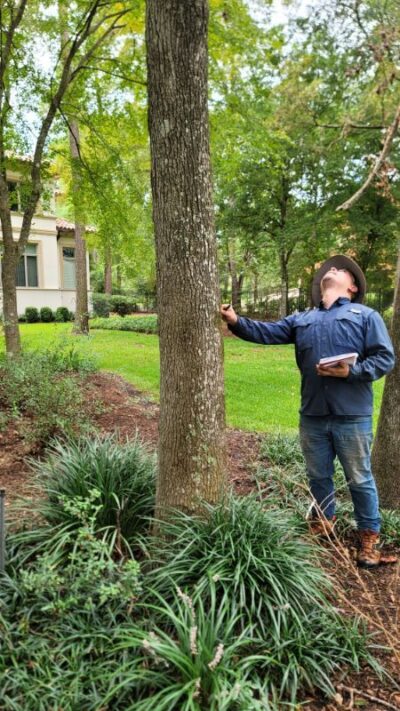Essential Tree Protection Steps in Pre-Construction Planning
Planning ahead is the best way to keep trees safe during construction. Pre-construction Mitigation is essential to prevent damage and maintain a healthy landscape. Without proper steps, heavy machines, digging, and building can harm trees. Marking tree protection areas and preparing trees before construction starts is key.
Creating protection zones around important trees and working with tree experts are simple but powerful ways to keep trees safe. Good planning ensures your trees will stay tall and strong, making your yard beautiful. Protecting trees early means you’ll enjoy shade and greenery for years. A little effort today will help trees stay healthy in the future. Keeping a record of your tree protection plan and checking on trees regularly can help catch problems before they get worse.
Understanding How Construction Can Harm Trees
Construction can be tough on trees. Heavy machines crush roots, and digging disrupts how trees get water and nutrients. Even small soil changes can stress trees and cause damage. That’s why pre-construction mitigation and tree protection zones matter—they keep machines and materials at a safe distance from trees.
Watch for warning signs like yellowing leaves, cracked bark, or drooping branches. Spotting these problems early on helps you save trees and keep your yard looking great. Knowing how construction affects trees makes it easier to protect them. Professional soil testing before construction can prevent problems and keep trees strong.
Working with Certified Arborists to Check Tree Health
An arborist is like a tree doctor. They check trees to see if they’re healthy, where they’re located, and how big they are. Certified Arborists help you decide which trees to save and suggest ways to protect them during construction.
Hiring a ISA Certified Arborist early ensures effective pre-construction tree protection, saves money, and keeps trees in good shape. Their advice helps make sure that your trees stay strong even after construction. A professional ISA Certified Arborist, like Nature’s Restore, can help with detailed tree health checks and recovery tips. Regular follow-up visits after construction can also help trees adjust and recover from stress or damage.
How to Set Up Tree Protection Barriers
Tree protection barriers, like fences, guard roots and trunks from construction damage. These barriers should be placed around the protection zone, also called the drip line, where the tree’s branches spread out.
Make sure the fencing is strong and can handle nearby construction work. These barriers are key to pre-construction tree protection and keeping trees healthy. A well-protected tree experiences less stress and keeps the landscape looking great after construction. Signs near tree barriers can also help workers understand their importance and prevent accidental damage.
How Soil Compaction Hurts Trees and How to Prevent It
Soil compaction happens when heavy machines press down on the ground, making the soil hard and tight. This stops air and water from reaching roots, which weakens trees over time. To prevent this, protection zones should limit how much heavy equipment moves near trees.
Adding mulch around trees keeps soil soft and helps roots get air. Keeping machines and workers away from tree roots allows the soil to stay loose, helping trees grow stronger. Compacted soil weakens trees and can lead to root rot. Aerating the soil after construction can improve tree health and help roots recover.
How to Protect Tree Roots During Digging and Grading
Tree roots absorb water and nutrients. If cut, trees can weaken or die. Careful digging and grading help avoid cutting important roots.
If you must cut roots, make clean cuts to lower the risk of infection. With proper care, trees can still thrive after construction. Healthy roots lead to healthy trees, so always handle them carefully. If roots are damaged, special growth boosters can help them heal faster.
Building Techniques That Help Keep Trees Safe
Small changes in construction methods can help trees. Protecting the tree canopy (branches and leaves) is just as important as protecting roots. Instead of cutting roots, builders can tunnel under them or reroute equipment away from protected areas.
Smart building choices lower stress on trees and prevent problems later. If you plan carefully, you’ll enjoy a lush and healthy yard when the work is done. Using low-impact construction equipment can also help reduce tree stress and keep your landscape green.
Watching Tree Health During Construction
It’s important to keep an eye on trees while construction happens. Look for stress signs like drooping leaves, peeling bark, or fungus on the tree. If protection zones get disturbed, trees might need extra care.
Giving trees enough water and checking the soil keeps them strong. Catching problems early makes fixing them easier. Keeping a tree care journal can help track changes and spot issues before they worsen.
What to Do If a Tree Gets Damaged
Even with the best planning, accidents happen. If a tree gets hurt, acting fast is important. Cut broken branches carefully and call a certified arborist if the trunk or roots are badly damaged. Quick action can stop infection and decay.
Taking care of tree damage right away can save a tree from dying. The faster you act, the better the chances are that the tree will heal. Using wound sealants on damaged bark can protect trees from further stress and infection.
How to Care for Trees After Construction
After construction, trees need care to recover. Mature trees add value and benefit from deep watering, mulching, and pruning to grow new branches. Fertilizing the soil restores nutrients. With proper care, trees stay strong and keep your yard beautiful. Construction doesn’t have to harm your landscape—caring for trees afterward keeps them healthy. Seasonal checkups help trees grow and recover faster.
By following these steps, you can protect trees before, during, and after construction. Planning ahead, using pre-construction mitigation strategies, setting up proper barriers, watching for signs of damage, and giving trees the care they need will keep your yard looking green and beautiful. Taking care of trees today means you’ll enjoy their shade and beauty for many years!
Feature Image Courtesy of Nature’s Restore, Certified ISA Arborist serving the Texas area












